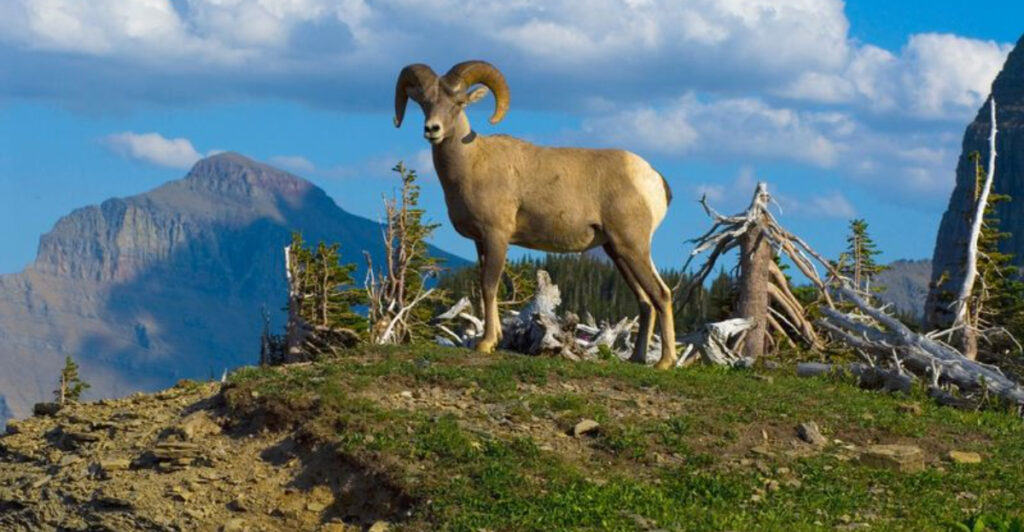Glacier National Park offers incredible wildlife viewing opportunities throughout the year, but timing makes all the difference between an ordinary visit and an unforgettable encounter. From mountain goats perched on rocky ledges to bears foraging for berries, knowing when and where to look dramatically increases your chances of spotting these amazing creatures. Whether you’re an early riser hoping to catch bears at dawn or planning a summer family trip to see mountain goats, these wildlife windows will help you make the most of your Glacier adventure.
1. Dawn and Dusk Magic: Year-Round Wildlife Activity
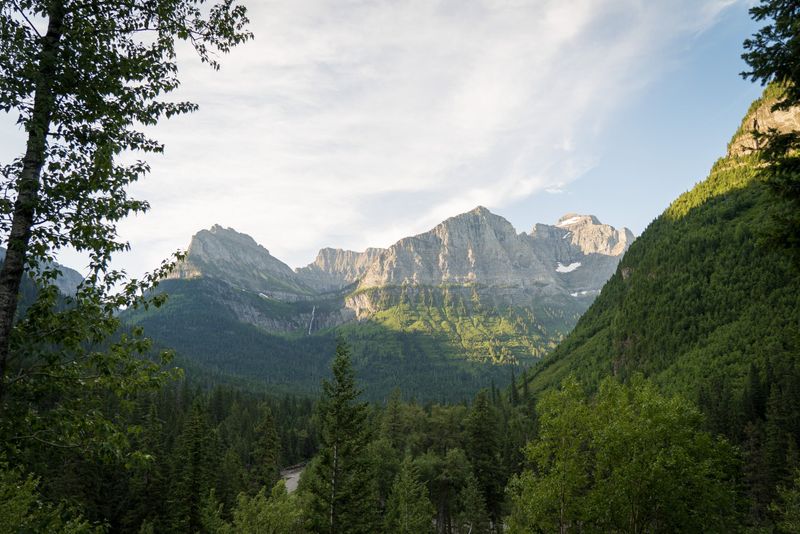
Nothing beats the golden hours for wildlife watching in Glacier National Park. Animals prefer cooler temperatures and quieter surroundings, making early morning and evening the prime times for sightings.
Bears emerge from their resting spots to forage, while moose wade through marshes and lakes. Mountain goats navigate rocky slopes, and bighorn sheep graze peacefully on hillsides.
Pack warm layers and arrive at viewing areas before sunrise or stay until after sunset. Your patience during these magical hours often rewards you with the most memorable wildlife encounters of your entire Glacier experience.
2. Spring Awakening: Late May to June Bear Activity
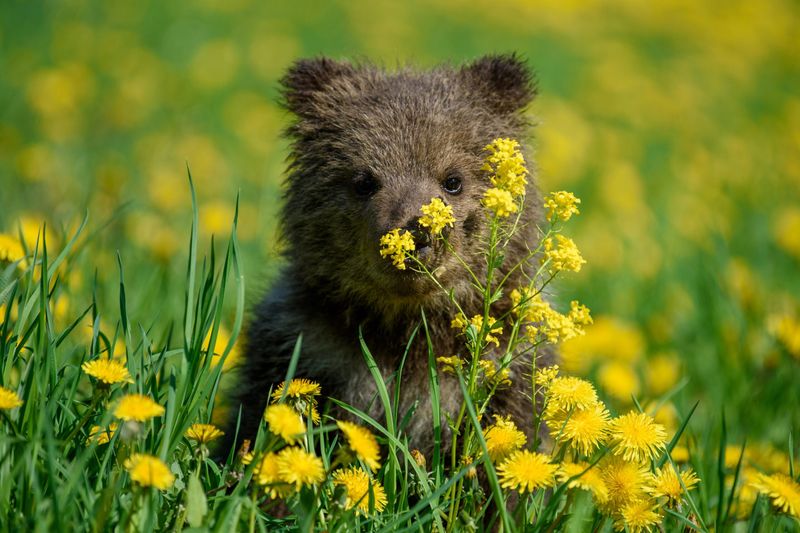
Spring transforms Glacier’s lower valleys into a bear buffet. Fresh vegetation pushes through thawing soil, providing hungry bears with much-needed nutrition after their long winter sleep.
Grizzlies particularly love digging for glacier lily bulbs, creating small excavation sites throughout meadows. Black bears focus on tender shoots and roots along valley floors and sunny slopes.
Many high-elevation roads remain closed due to snow, but accessible areas offer excellent bear viewing opportunities. Bring binoculars and maintain safe distances while watching these powerful animals fuel up for the active season ahead.
3. Logan Pass Opens: Mountain Goats and Bighorn Sheep Paradise

When Going-to-the-Sun Road finally reaches Logan Pass in early to mid-July, wildlife watchers celebrate. The visitor center area and Hidden Lake Overlook become reliable hotspots for mountain goats and bighorn sheep.
These sure-footed animals often graze surprisingly close to boardwalks and viewing areas. Families with children especially love this accessible wildlife viewing opportunity that requires minimal hiking.
Parking fills extremely early during peak season, so arrive before 8 AM or after 4 PM. The stunning alpine setting combined with frequent animal sightings makes Logan Pass a must-visit destination for any wildlife enthusiast.
4. Berry Season Bonanza: Late July to August Bear Feeding Frenzy
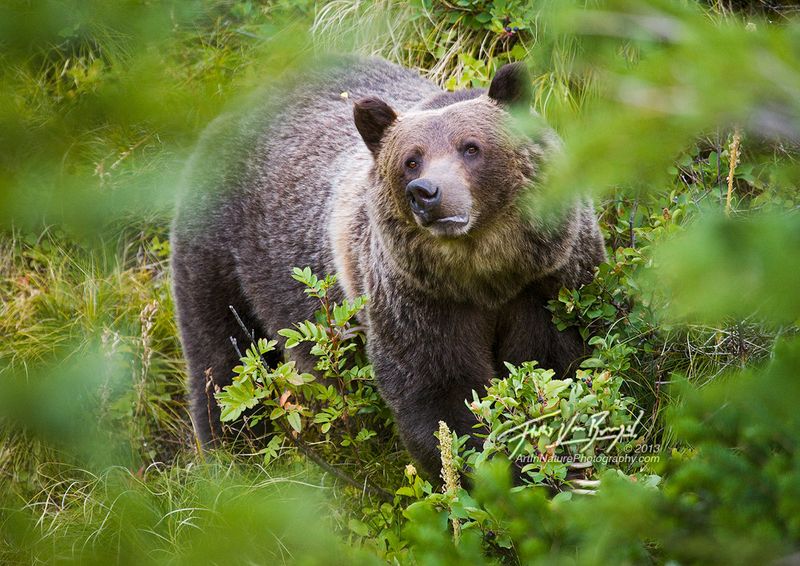
Huckleberries ripen across Glacier’s subalpine slopes during late summer, creating a bear feeding frenzy. Both grizzly and black bears spend countless hours consuming these nutritious berries to build fat reserves.
Bear sightings increase dramatically along berry-rich hillsides and meadows. Popular viewing areas include slopes visible from Going-to-the-Sun Road and various hiking trails.
Always carry bear spray and maintain proper distances during this active feeding period. Bears become intensely focused on foraging, making them potentially more dangerous if surprised. Your safety depends on staying alert and giving these powerful animals plenty of space while they prepare for winter.
5. Summer’s Extended Daylight: Maximum Wildlife Opportunities
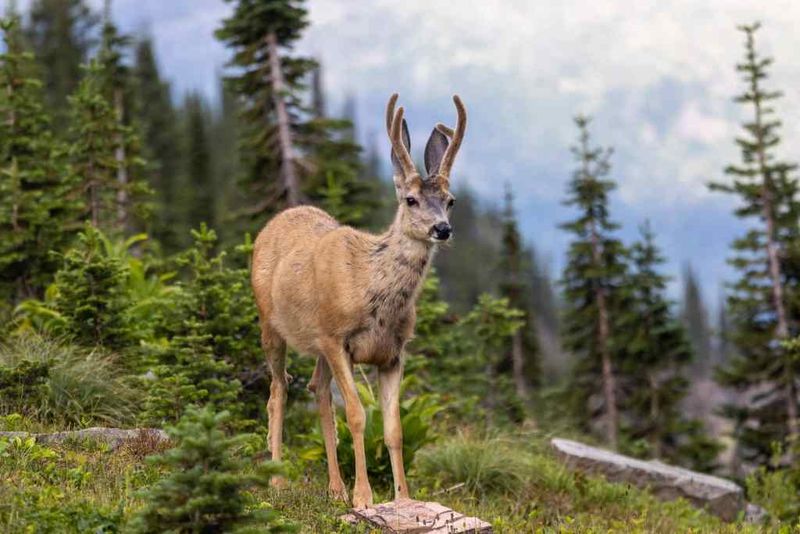
July and August bring Glacier’s longest days, with nearly 16 hours of daylight providing extended wildlife viewing windows. More services operate, roads stay open longer, and trail access reaches its peak.
Extended daylight means more opportunities to spot animals during their active periods. Early risers can catch dawn activity, while night owls enjoy lengthy evening viewing sessions.
Most park facilities operate at full capacity, making it easier to access prime wildlife areas. However, increased visitor numbers mean popular spots fill quickly. Plan accordingly by arriving early at parking areas and having backup viewing locations ready for your wildlife adventures.
6. September’s Spectacular Rut Season and Smaller Crowds

September brings dramatic behavioral changes as shorter days trigger the elk rut and other seasonal activities. Bull elk bugle across valleys, creating an unforgettable soundtrack to your wildlife viewing experience.
Bears continue intensive feeding before winter denning, while other animals prepare for colder months ahead. Cooler temperatures often increase daytime animal activity compared to hot summer days.
Fewer visitors mean better parking availability and more peaceful viewing experiences. Weather can change quickly, so pack layers and check conditions before heading out. September often provides some of the year’s best wildlife photography opportunities with stunning fall colors as backdrops.
7. Many Glacier Moose Haven: September to Early October
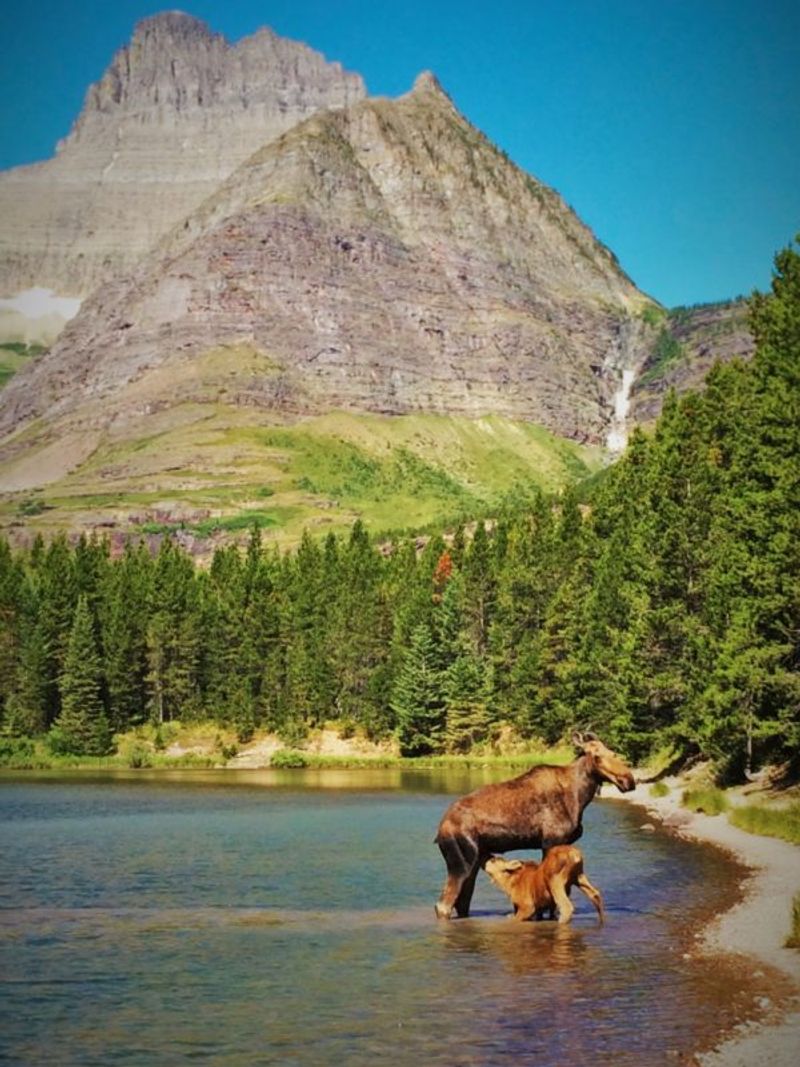
Fishercap Lake near Swiftcurrent becomes moose central during early fall. These massive animals frequent the area’s marshy habitat, especially during dawn and dusk hours when they feel most comfortable.
Moose stand up to six feet tall and can weigh over 1,000 pounds, making them truly impressive to observe. Bulls sport magnificent antlers during fall, while cows often travel with calves from earlier in the year.
Bring binoculars and remain at safe distances, as moose can become aggressive if they feel threatened. The Many Glacier area offers excellent moose viewing opportunities combined with stunning mountain scenery that makes every sighting even more memorable.
8. Family-Friendly Logan Pass: Easy Mountain Goat and Sheep Viewing
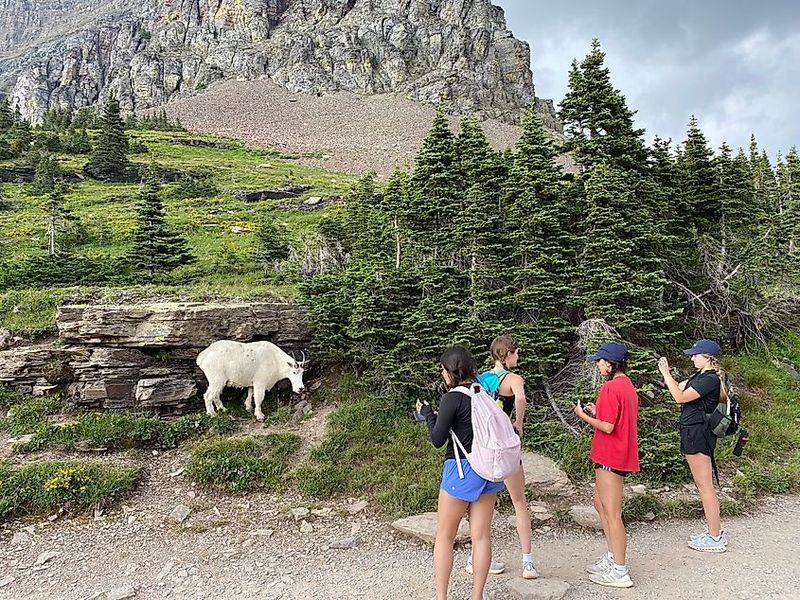
Logan Pass provides the perfect introduction to Glacier wildlife for families with children or visitors preferring shorter walks. Mountain goats and bighorn sheep frequently appear near the visitor center and along accessible boardwalks.
Kids love spotting these sure-footed climbers navigating seemingly impossible rocky terrain. The animals often graze within easy viewing distance, creating excellent photo opportunities without strenuous hiking requirements.
Educational displays at the visitor center help identify different species and explain their adaptations to harsh mountain environments. Remember that parking fills very early during summer months, so plan accordingly for this popular and rewarding wildlife viewing destination.
9. Shoulder Season Adventures: October-November and April Dedication Required
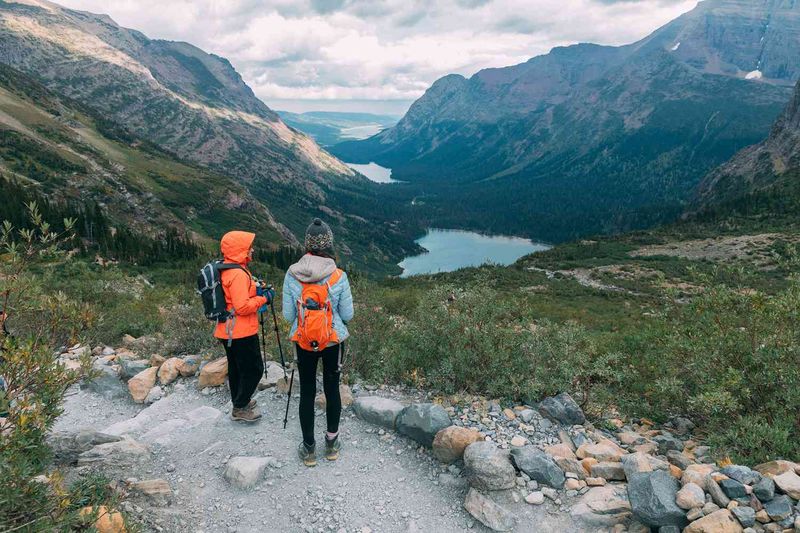
Dedicated wildlife watchers find rewards during Glacier’s shoulder seasons, though conditions become challenging. Services wind down, higher elevations close, and weather changes rapidly throughout the day.
Lower valley areas remain accessible and often provide excellent wildlife viewing with dramatically reduced crowds. Animals continue their daily routines despite fewer human observers around to disturb their natural behaviors.
Check current conditions before traveling, as road closures and weather can change plans quickly. Bring extra layers, emergency supplies, and flexible expectations. Shoulder season visits reward prepared visitors with intimate wildlife encounters in a more pristine, less crowded park environment.
10. Safety First: Essential Wildlife Distance Rules and Etiquette

Glacier National Park requires visitors to maintain 100 yards from bears and wolves, and 25 yards from all other wildlife. These distances protect both animals and people from dangerous encounters.
Watch for behavioral changes in animals, as these indicate you’re too close. Animals that stop feeding, look directly at you, or change direction are sending clear warning signals to back away immediately.
Use designated pullouts for roadside viewing and always carry binoculars or telephoto lenses for close-up observations. Bear spray should accompany every outdoor adventure. Respecting these guidelines ensures wildlife remains wild and your Glacier experience stays safe and enjoyable for everyone.

